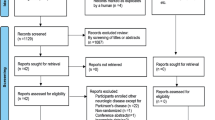Abstract
Purpose
To investigate the safety, efficacy and effectiveness of botulinum toxin type-B (BTX-B) injections into the parotid glands to reduce drooling in Parkinson’s disease (PD) subjects.
Methods
A double-blind, randomised, placebo-controlled study enrolled 36 advanced phase PD subjects who complained of disabling drooling. Patients received either 4000U BTX-B or placebo. Anatomically guided injections were performed. Outcome measures were chosen to assess both the subjective feeling of improvement (i. e. the Drooling Severity and Frequency Scale, DSFS, visuo-analogic ratings of familial distress, VAS-FD, and social distress, VAS-SD) and objective saliva reduction (saliva production over five minutes was checked by weighing dental rolls). The Global Impression Score (GIS) was also applied, rating improvement from 0 to 3.
Results
One month after injections, BTX-B patients showed a meaningful improvement in almost all subjective outcomes. Two-way analysis of variance gave a significant time × treatment effect, F-value being 52.5 (p < 0.0001) for DS-FS, 23.2 (p < 0.0001) for VAS-FD, 29 (p < 0.0001) for VAS-SD, and 28.9 (p < 0.0001) for UPDRSADL drooling item score. All BTX-B subjects declared sialorrhea reduction of any kind (moderate for 44.4 % cases, and dramatic for 33.3 % subjects), at variance with 61.1 % controls who denied any benefit from treatment. (Chi-square = 22.9; p < 0.0001). When present, benefits lasted on average 19.2 ± 6.3 weeks in the BTX-B group compared to 6.7 ± 1.4 weeks in controls (T-value: 26.4; p < 0.0001).
Conclusions
BTXB represents a safe and efficacious tool for the management of PDrelated drooling, ensuring a longlasting waning of this disabling symptom.
Similar content being viewed by others
References
Bateson MC, Gibberd FB, Wilson RSE (1973) Salivary symptoms in Parkinson’s disease. Arch Neurol 14:13–22
Crysdale WS, White A (1989) Submandibular duct relocation for drooling: a 10-year experience with 194 patients. Otolaryngol Head Neck Surg 101:87–92
Andersen PM, Gronberg H, Franzen L, Funegard U (2001) External radiation of the parotid glands significantly reduces drooling in patients with motor neurone disease with bulbar paresis. J Neurol Sci 191:111–114
Lipp A, Trottenberg T, Schink A, Kupsch A, Arnold G (2003) A randomized trial of botulinum toxin A for treatment of drooling. Neurology 61:1279–1281
Mancini F, Zangaglia R, Silvano C, Sommaruga MG, Martignoni E, Nappi G, Pacchetti C (2003) Double blind, placebo controlled study to evaluate the efficacy and safety of botulinum toxin type A in the treatment of drooling in Parkinsonism. Mov Disord 18:685–688
Lagalla G, Millevolte M, Capecci M, Provinciali L, Ceravolo MG (2006) Botulinum toxin type A for drooling in Parkinson’s disease: a double blind, randomized, controlled study. Mov Disord 21(5):704–707
Brin MF, Lew MF, Adler CH, Comella CL, Factor SA, Jankovic J, O’Brien C, Murray JJ, Wallace JD, Willmer-Hulme A, Koller M (1999) Safety and efficacy of Neurobloc (botulinum toxin type B) in type A resistant cervical dystonia. Neurology 53:1431–1438
Ondo WG, Hunter C, Moore W (2004) A double-blind placebo-controlled trial of botulinum toxin B for sialorrhea in Parkinson’s disease. Neurology 62:37–40
Gelb DJ, Olivier E, Gilman S (1999) Diagnostic criteria for Parkinson’s Disease. Arch Neurol 56:33–39
Racette BA, Good L, Sagitto S, Perlmutter JS (2003) Botulinum toxin B reduces sialorrhea in Parkinsonism. Movement Disorders 18(9):1059–1061
Contarino MF, Pompili M, Tittoto P, Vanacore N, Sabatelli M, Cedrone A, Rapaccini GL, Gasbarrini G, Tonali PA, Bentivoglio AR (2007) Botulinum toxin B ultrasound-guided injections for sialorrhea in amyotrophic lateral sclerosis and Parkinson’s disease. Parkinsonism and Related Disorders 13:299–303
Bhatia KP, Munchau A, Brown P (1999) Botulinum toxin is a useful treatment in excessive drooling of saliva. J Neurol Neurosurg Psychiatry 67:697
Jost WH (1999) Treatment of drooling in Parkinson’s disease with botulinum toxin. Mov Disord 14:1057–1059
Tan EK, Lo YL, Seah A, Auchus AP (2001) Recurrent jaw dislocation after botulinum toxin treatment for sialorrhoea in amyotrophic lateral sclerosis. J Neurol Sci 190:95–7
Bagheri H, Damase-Michel C, Lapeyre- Mestre M, et al. (1999) A study of salivary secretion in Parkinson’s disease. Clin Neuropharmacol 22:213–215
Johnston BT, Li Q, Castell JA, Castell DO (1995) Swallowing and esophageal function in Parkinson’s disease. Am J Gastroenterol 90:1741–1746
Ellies M, Laskawi R, Rohrbach-Volland S, Arglebe C, Beuche W (2002) Botulinum toxin to reduce saliva flow: selected indications for ultrasoundguided toxin application into salivary glands. Laryngoscope 112:82–86
Dogu O, Apaydin D, Sevim S, Talas DU, Aral M (2004) Ultrasound-guided versus “blind” intraparotid injection of botulinum toxin-A for the treatment of sialorrhoea in patients with Parkinson’s disease. Clinic Neurol and Neurosug 106(2):93–96
Author information
Authors and Affiliations
Corresponding author
Rights and permissions
About this article
Cite this article
Lagalla, G., Millevolte, M., Capecci, M. et al. Long-lasting benefits of botulinum toxin type B in Parkinson’s disease-related drooling. J Neurol 256, 563–567 (2009). https://doi.org/10.1007/s00415-009-0085-1
Received:
Revised:
Accepted:
Published:
Issue Date:
DOI: https://doi.org/10.1007/s00415-009-0085-1




